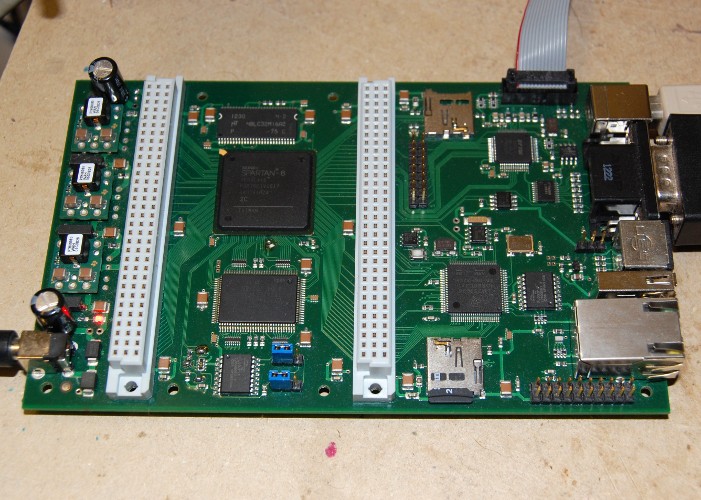Part 2: Hello World
Since my last post I’ve received yet another board from Emanuel – another prototype FPGA board with Spartan 6, SDRAM and SSRAM. This one’s a little simpler than the previous board, with no ports other than USB on the board itself, and a daughter card with a VGA connector on it. Unlike the previous board, which had a 2-bits-per-gun resistor ladder DAC, this one has an ADV7123 video DAC chip – the same one used on the DE2 board – which has an impressive 10 bits per gun. That’s good enough to do 24-bit true colour with headroom for calibration tables!
So, let’s get “Hello World” running on this board. Continue reading


